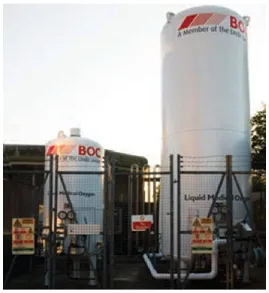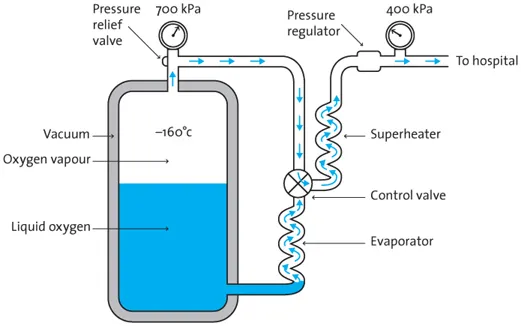
Equipment in Anaesthesia and Critical Care
A complete guide for the FRCA
- 416 pages
- English
- ePUB (mobile friendly)
- Available on iOS & Android
Equipment in Anaesthesia and Critical Care
A complete guide for the FRCA
About this book
Highly commended in the Anaesthesia category of the 2014 BMA Medical Books awards! From reviews:
"Altogether, this textbook offers an excellent detailed overview of basic principles, mechanics, and physics of technical equipment used in anaesthesia and intensive care medicine." Critical Care, Feb 2014 "This book is excellent. I have read a number of equipment related books and found most of them stale and filled with minutia. Instead this fresh look at equipment really makes it interesting to read and keeps your attention. With sections that give quick answers to how things work, advantages and disadvantages, in an easy to read format you get exactly what you want to know RIGHT away. In addition the full color photos and well done charts really add to the depth of this book. It is my opinion this may be one of the best books on the market for quick review of anesthesia and critical care equipment. Let's be honest, no one is sitting at home reading equipment books for pleasure so when you NEED the information you likely need it right away. This book does exactly that; easy format, clear and concise information with everything you need to know about a piece of equipment easy to find and within a page or two. I would recommend this to all trainees in anesthesia but also for those providers who like to be prepared in the operating room to deal with any issue that might arise." www.nurse-anesthesia.org, 8 Feb 2014 Equipment in Anaesthesia and Critical Care specifically follows the syllabus published by the Royal College of Anaesthetists and is the perfect guide for candidates studying for their FRCA qualifications. The book is beautifully illustrated and features high quality colour photographs throughout. The text is engaging and comprehensive, relating each piece of equipment back to its basic physics, mechanics and clinical context. The clear, concise and standardised format means that information is easy to access and perfect for revision. Every major piece of equipment is featured alongside colour photos, reproducible line diagrams, and information on its uses, how it works, pros and cons, and safety considerations. The authors, all senior registrars in anaesthesia and critical care, appreciate exactly what candidates need to know to pass the FRCA exam. They have identified and tackled difficult subjects which are often glossed over or omitted in other resources, to produce a book that is comprehensive, engaging and to the point. In addition to FRCA candidates, the book is also suitable for operating department practitioners, critical care staff, and physicians with an interest in anaesthesia or critical care.
Frequently asked questions
- Essential is ideal for learners and professionals who enjoy exploring a wide range of subjects. Access the Essential Library with 800,000+ trusted titles and best-sellers across business, personal growth, and the humanities. Includes unlimited reading time and Standard Read Aloud voice.
- Complete: Perfect for advanced learners and researchers needing full, unrestricted access. Unlock 1.4M+ books across hundreds of subjects, including academic and specialized titles. The Complete Plan also includes advanced features like Premium Read Aloud and Research Assistant.
Please note we cannot support devices running on iOS 13 and Android 7 or earlier. Learn more about using the app.
Information
Chapter 1
Medical gases
| Vacuum insulated evaporator |


Overview
Uses
How it works
General principles
Low and high use situations

Measuring the contents

- Storing liquid oxygen is highly efficient in terms of space. It expands to 860 times its volume as it vaporizes to 20°C.
- Compared with a cylinder at room temperature, liquid oxygen is stored at a much lower pressure (700 instead of 13 700 kPa).
- The VIE does not require power to store oxygen in a liquid state.
- Oxygen is therefore cheaper both to deliver and to store as a liquid.

- Initial equipment costs are much higher than a cylinder manifold.
- A backup cylinder manifold and/or second VIE is required in case of interruption to the oxygen supply.
- If demand is not fairly continuous a significant amount of oxygen will be unused and vented.

- The VIE must be kept outside the building because of the fire risk.
| Cylinder manifolds |

Overview
Uses
How it works
Table of contents
- Cover
- Title
- Copyright
- Contents
- Preface
- Acknowledgements
- Abbreviations
- 1 Medical gases
- 2 Airway equipment Masks, supraglottic airways and airway adjuncts
- 3 Breathing systems
- 4 Ventilators
- 5 Delivery of anaesthetic agents
- 6 Monitoring equipment
- 7 Filters and humidifiers
- 8 Regional anaesthesia
- 9 Critical care
- 10 Surgical equipment relevant to anaesthetists
- 11 Radiological equipment
- 12 Miscellaneous
- 13 Sample FRCA questions
- Index

